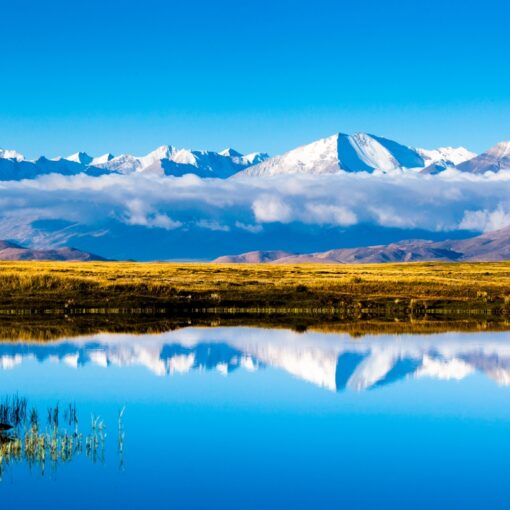Glaciers are sometimes viewed as the thermometers of the world and the retreat of glaciers worldwide dramatically illustrates the effect of global warming. However, not all glaciers respond in the same way to the changing climate. Notably, the behaviour of some glaciers in the high mountains of Asia, which included ranges such as the Himalaya and Karakoram, is not well understood, since in some regions, the glaciers are not even shrinking, but growing. In new work led by Remco de Kok we try to better understand the pattern of glacier changes in High Mountain Asia.
We tried to reproduce the pattern of growth and shrinkage of the glaciers in High Mountain Asia by running a regional climate model over the period 1980–2010, and couple this output to a glacier model. With this, we managed to reasonably reproduce the observed pattern of glacier mass balances, meaning that we have glaciers growing at the correct places, and melting elsewhere. We could therefore start to better understand what is causing these growing glaciers using our models.

Normally, the glacier model is forced by both temperature and snowfall changes, but one thing we did is force the glacier model with only changes in temperature or only changes in snowfall, to see which of the two variable is most important. It turned out that, in our models, the growing glaciers are caused by an increase in snowfall during the period 1980–2010, not by a decrease in temperature. In contrast, for ranges like the Himalaya, the increase in temperature is the largest driver of the glacier mass loss. We found that the growing glaciers in Kunlun Shan and Karakoram are in any case less sensitive to temperature changes than those in the Himalaya.
We also looked where the extra snowfall is feeding the growing glaciers. We find that there are several regions that contribute to the increase in snowfall. It looks like the increase in irrigation in China is one of the main contributors. An increase in evaporation from the Caspian Sea and Caucasus region also gives rise to more snowfall in a large part of north-west High Mountain Asia, including the regions of the growing glaciers.
Models like ours always have some uncertainties, but we were unable to check the performance of the models in the regions of the growing glaciers, since there are almost no measurements available there. We compared our model results with many different datasets in the broader region, and the model seems to perform well, but more measurements are ultimately needed to better understand the puzzling behaviour of the growing glaciers.
For more details, please read our paper (open access):
Remco J. de Kok, Philip D. A. Kraaijenbrink, Obbe A. Tuinenburg, Pleun N. J. Bonekamp, and Walter W. Immerzeel(2020). Towards understanding the pattern of glacier mass balances in High Mountain Asia using regional climatic modelling, The Cryosphere, 14, 3215–3234, https://doi.org/10.5194/tc-14-3215-2020




